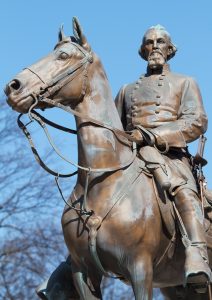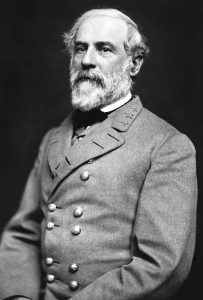First, I must apologize for making you read the following excerpt – do skip over most of it – but it, and its like, are the subject of this essay:
100 on my wrist, 80 on my wrist, 100 on my wrist, 80 on my wrist, 100 on my wrist, 80 on my wrist, 100 on my wrist, 80 on my wrist, D Rose, D Rose, D Rose, D Rose, D Rose, D Rose, D Rose, D Rose, D Rose, D Rose, D Rose, D Rose, D Rose, D Rose, D Rose, D Rose, 80 on my wrist, 100 on my wrist, 80 on my wrist, 100 on my wrist, 80 on my wrist, 100 on my wrist, 80 on my wrist, 100 on my wrist, D Rose, D Rose, D Rose, D Rose, D Rose, D Rose, D Rose, D Rose, D Rose, D Rose, D Rose, D Rose, D Rose, D Rose, D Rose, D Rose.
This curious bit of vernacular is the first verse of the song “D Rose,” which was written by the rapper Lil Pump. Now, these lyrics may appear to be just an odd jumble of 3 phrases, repeated dozens of times. But they happen to be a very popular jumble of 3 phrases. In less than a year, almost 50 million people have listened to “D Rose” on Spotify, and the official music video is dangerously close to 100 million views on Youtube. And “D Rose” isn’t even Lil Pump’s most popular song. In fact, “D Rose” is only the fourth or fifth most popular track on Lil Pump’s self-titled debut album.
For some more perspective, I recently attended a bat mitzvah. At the after party, tweens gleefully danced and sung along to the usual pop hits by Justin Bieber and Taylor Swift. But what excited them more than anything was the song “Gucci Gang” by Lil Pump. Images of what has been dubbed the “trap life,” i.e. selling drugs, carrying guns, fucking hoes etc. were instantly adopted by dozens of 12-year-old Jewish kids. In particular, I was surprised to see these children pretend to rip lines off of their index fingers in response to the lyric “my bitch love do cocaine.” Thus, it would seem that the popularity of Lil Pump is amazingly widespread, reaching even the most unexpected audiences. So how on Earth did all of this occur? What led to the rise of Lil Pump? Well, unlike Lil Pump’s music itself, the answer is complex. Among other factors, rebellion, mindlessness, and race all play into the equation, creating a web of representations and conformity.
Before we can begin to investigate what’s behind Lil Pump, here’s some background: Lil Pump, who’s real name is Gazzy Garcia, is a 17-year-old from Miami. He was expelled from high school for fighting, and turned to rapping. Uploading his songs to the music platform SoundCloud, Lil Pump became an underground sensation as his tracks got millions of listens. Eventually in the summer of 2017, he signed a record deal with Warner Bros. Records and Tha Lights Global, all of this before his 17th birthday. His most popular song “Gucci Gang” was ranked 3rd on the Billboard Hot 100 chart at its peak and currently, in December 2017, has over 198 million listens on Spotify and just shy of 269 million views of its official music video on Youtube.

We also need to agree that Lil Pump’s music – to put it bluntly – is uninventive and doesn’t amount to much (this may be taken as subjective, so I’ll try to objectively prove this). Not only are his songs short (the tracks in his first album average around 2:00 minutes in length), but they are extremely repetitive as well. A quick analysis (using an online unique word count calculator) shows that “D Rose” has just 60 unique words out of a total of 353, while “Gucci Gang” similarly has 106 unique words out of 361. This comes out to be 17% and 29% unique verbiage respectively. In Lil Pump’s first album as a whole, in the average song there are 61 unique words out of 431 total words, amounting to 14% uniqueness. Compare this to iconic rap songs like “If I Ruled the World” by Nas which has 43% unique words, or “Juicy” by Biggie Smalls at 48% unique. All of these numbers go to demonstrate that Lil Pump is not inventive by any measure. And it’s not just his lyrics: the beats he raps over are just your run-of-the-mill trap beat; there is no innovation. Furthermore, Lil Pump’s style is copycat. Rappers like Lil Uzi Vert and Playboi Carti already had pioneered the simplistic and repetitive style that Lil Pump has bandwagoned, with the only change being that Lil Pump has taken the trap genre to a whole new level of mindlessness. Lil Pump amounts to a “Xanned-out teenager who doesn’t tell us anything interesting about himself or his world (Kuppermann).”
Assuming that Lil Pump’s music is not itself groundbreaking, interesting, etc. it still begs the question as to why so many millions of people listen to it. The short answer is that people listen because it’s cool, because it’s hip; more importantly, people listen because it’s rebellious. With this in mind, over 20 years ago, a cultural critic named Thomas Frank predicted the rise of someone like Lil Pump. In an essay titled “Dark Age,” Frank highlights how the culture industry seeks out the “avant-garde” and digs around for underground talent in order to continually find new products and artists to bring into the mainstream fold. This action gives the consumer the impression that they are buying something organic and fresh, not some factory-made industrial gizmo. Frank details this process further in his book The Conquest of Cool, calling it a cycle of “hip consumerism” that the culture industry uses. In particular he highlights how the hip culture of the young is turned around and used in corporate advertising. Almost to a point this describes the Lil Pump phenomenon: he started out as an underground SoundCloud rapper, and after gaining attention signed with Warner Bros. Records – a culture industry mainstay. Thus, the culture industry advertises Lil Pump as hip, cool, and rebellious. Frank goes on to answer why people want the avant-garde in the first place, and consequently how the culture industry takes advantage of this. He points out that ever since the 1950’s, America has developed a countercultural and rebellious ideal. In other words, people have an urge to resist conformity, a desire to question and break rules. They feel the need to push away the “social prescriptions” that society puts on them. And of course, the culture industry happily adopts this feeling in their promotion of products. Turn on the TV and an ad will convince you how cool you’ll be if you buy that new car, how original you’ll be if you drink that soda. It is this urge to rebel that describes Lil Pump’s appeal.
The music video of “Gucci Gang” gives us a good window into how Lil Pump’s rebellious images are consumed by viewers (not the music). First, I have to point out that I’ve watched the video a handful of times to write this essay, and each time I watch, the music grows on me; it really does seem hip and cool, and the music is so simplistic and catchy that it creeps into my mind, coaxing me to like it – to accept it and convert to it. Anyways, the video opens with Lil Pump arriving at “Gucci Gang High” in a sports car. This has a double meaning because he’s arriving at a high school, but he’s also smoking a blunt, so he himself is high. There are images of beautiful women and more fancy Range Rovers and Porsches. It then shows Lil Pump walking past lockers, accompanied by a tiger (instantly upping the coolness factor), holding huge bags of weed. There are also scenes of his classmates dancing, having fun and drinking “lean” (a drink made with codeine). An older white woman – obviously out of place – brings out the lean, and even takes some time to chug down a cup herself. She is made to look like a grandmother, and the association of a grandma bringing out cookies is played upon: instead of a tray of cookies, grandma brings out a tray of narcotic drinks. This might be the most telling scene, because it indicates that everyone should take part in hanging with and listening to Lil Pump, even old ladies who we would assume spend their time crocheting and petting cats, not partying with high schoolers. Furthermore, this normalizes the rebellious ideal of the trap life to white Americans, and, in general, to people that would never conceive of taking part in those types of actions. Cementing the rebellion even more, the classmates start a food fight, and then Lil Pump smashes a pie into the face of someone who appears to be a teacher or school administrator in front of two gorgeous women gleefully looking on. Again, this implies that partaking in breaking the rules is awesome and that rebelling against authority transforms you into a cool kid. But as we learned from Thomas Frank, this is a ploy made by the culture industry. You may think you’re being countercultural by listening to Lil Pump, but in reality you’re playing right into the hands of the corporate machine.
Now, a few other aspects of Lil Pump that influence his appeal are his race and appearance. The two important items here are his rainbow-colored dreadlocks and racial ambiguity. Because Lil Pump is unoriginal in his music, he must utilize something else to be memorable. His dreads do just that: they allow him to stand out where he otherwise would not. This couples with his status as an underground SoundCloud rapper to create the facade that he’s a new and fresh artist. Moving forward, at first glance Lil Pump seems like he could be part African American. He has the dreads. And the trap genre is almost exclusively black, with major artists like Gucci Mane, Migos, Lil Uzi Vert, and ASAP Ferg. But given his real last name Garcia, he is more likely Hispanic. Really then, his race is multi-faceted. And I would go on to assert that this has allowed him to connect with a wider audience. Lighter skinned viewers might identify more with Lil Pump than other black trap artists, so this heightened association with Lil Pump brings more racial groups into the fold. (I also would like to point out that these interpretations are not the only possibilities; they do appear to be the most poignant and telling however.)

The stardom attained by Lil Pump creates a whole host of cultural problems. Since Lil Pump’s work is under the large umbrella of hip-hop and rap, his music has the effect of trivializing the greater genre from an artform of expression to a senseless commodity. And because of Lil Pump’s popularity, his music becomes representative of the entire genre in front of its mainstream audience. Therefore, the average person is likely to hear Lil Pump, and they might come to believe that this mindlessness is indicative of hip-hop. Thus, hip-hop culture is diminished. In exactly the same way, the hood/inner-city culture is also trivialized and commodified in Lil Pump’s music. The culture is negatively appropriated in the first place by Lil Pump and then is appropriated millions of times over by his listeners who consume the culture as a novel commodity. Fallacious images of the inner-city are then obtained by people who don’t know the realities of poverty. Therefore the hood culture is not only appropriated but also grossly misrepresented. This of course culminates with privileged, white 12-year-olds pretending to snort cocaine.
One more implication of Lil Pump’s rise is the fact that his initial fame on SoundCloud was completely organic. Without the culture industry, Lil Pump’s first few releases garnered millions of listens. Now this could be a sign of poor education in this country; a sign that people are not able to discern good music, art, and culture. But also, this could mean that Americans have been conditioned by the culture industry to find new forms of mindless entertainment for them. The culture industry’s past work of pumping out remedial pop culture may well have created a mechanism whereby regular people seek out mindless entertainment. If this is the case, American culture is most certainly in distress.
Good culture teaches us something about our humanity, or about our circumstance. It may point out something about society – good or bad. It may also extol a virtue, or perhaps it could be just simply beautiful and unique. Lil Pump does none of these things, so therefore, Lil Pump (and “artists” like him) creates bad culture. But alas, Lil Pump does create a culture. It is a culture of indifference – indifference to, well, everything. His purposeless rapping creates extreme disinterest towards important social and political issues, and more generally creates disinterest towards anything that may be helpful, righteous, or good for humanity.
Works Cited
Frank, Thomas C. The Conquest of Cool. Univ. of Chicago Press, 1997.
Frank, Thomas C. “Dark Age.” The Baffler, Dec. 1994, thebaffler.com/salvos/dark-age.
Kuppermann, Jacob. “‘Lil Pump’ is Not Worth Your Time.” University Wire Oct 18 2017. ProQuest. Web. 12 Dec. 2017.





